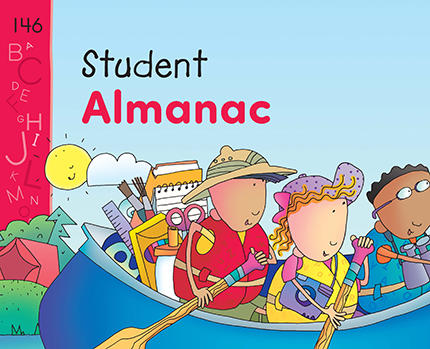Page 146 from

Start-Up Activity
The Student Almanac contains colorful charts that help students with a wide variety of subjects, including handwriting, computers, maps, and math.
Place students in pairs and give them time to explore the almanac (pages 146–167). Have students talk about the different types of information contained in this section. Ask each pair to identify two pages they like and share them with the class.
Enrichment Activity: These pages are placed in the back of the book for ready access. Encourage students to explore these pages throughout the school year.
Think About It
“An almanac is a collection of lists, charts, maps, and information.”

Start-Up Activity
The Student Almanac contains colorful charts that help students with a wide variety of subjects, including handwriting, computers, maps, and math.
Place students in pairs and give them time to explore the almanac (pages 146–167). Have students talk about the different types of information contained in this section. Ask each pair to identify two pages they like and share them with the class.
Enrichment Activity: These pages are placed in the back of the book for ready access. Encourage students to explore these pages throughout the school year.
Think About It
“An almanac is a collection of lists, charts, maps, and information.”